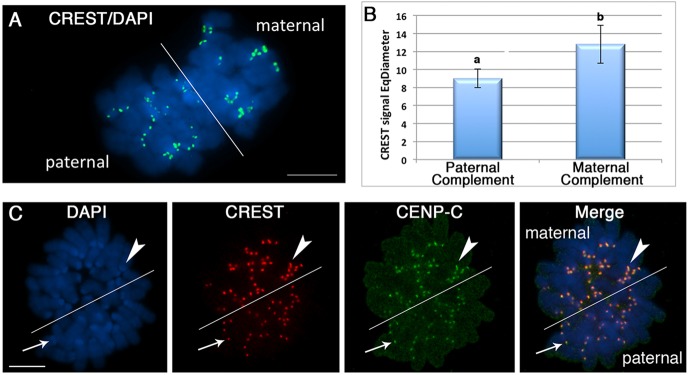Fig. 4.

Post-meiotic kinetochore asymmetry is associated with enrichment of CENP-C in the maternal genome. (A) Zygote-stage embryo during the first mitosis. The maternal and paternal chromosome complements (DAPI; blue) exhibit significant differences (P<0.0001) in the levels of kinetochore-associated proteins stained with the CREST anti-serum (green). (B) Quantitative analysis of the average equivalent diameter of CREST signals revealed that the mean diameter of maternal CREST foci is ∼42% larger than those of the paternal chromosome complement. Data represent the mean±s.d. of four independent replicates. a and b indicate significant differences. (C) In addition to CREST signals (red), the kinetochore-specific protein CENP-C is preferentially enriched on the maternal chromosome complement (arrowhead), demonstrating the existence of a previously unrecognized asymmetry in the levels of several kinetochore-associated proteins during the first mitosis in the mammalian embryo. A diagonal line can be easily traced to distinguish the maternal (arrowheads) from the paternal (thin arrow) chromosome complement based on kinetochore size asymmetry. Scale bars: 10 µm.
